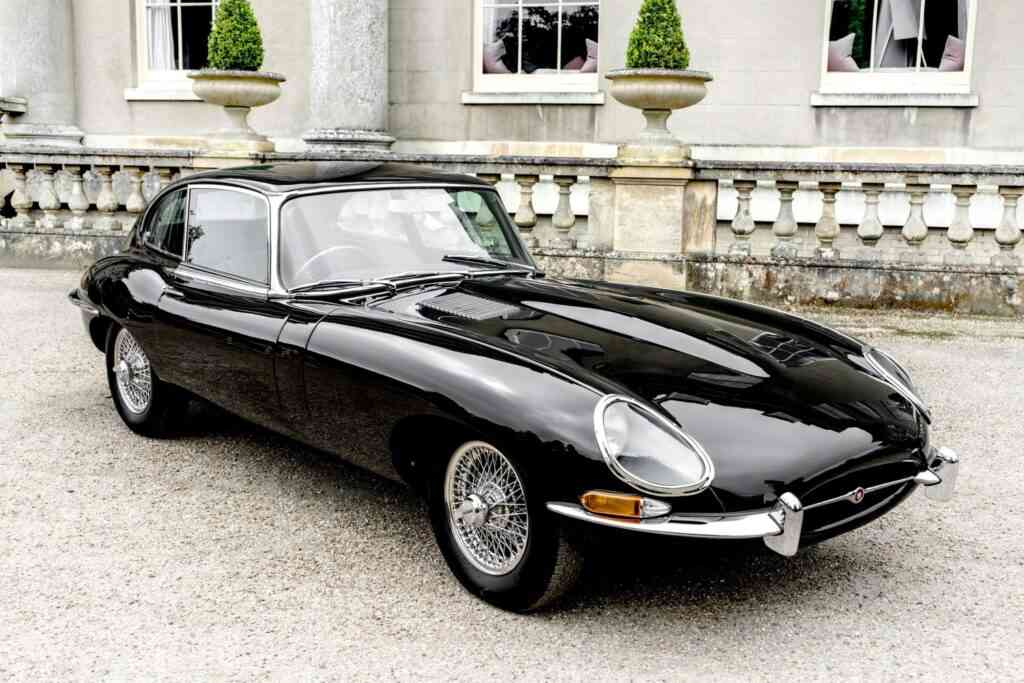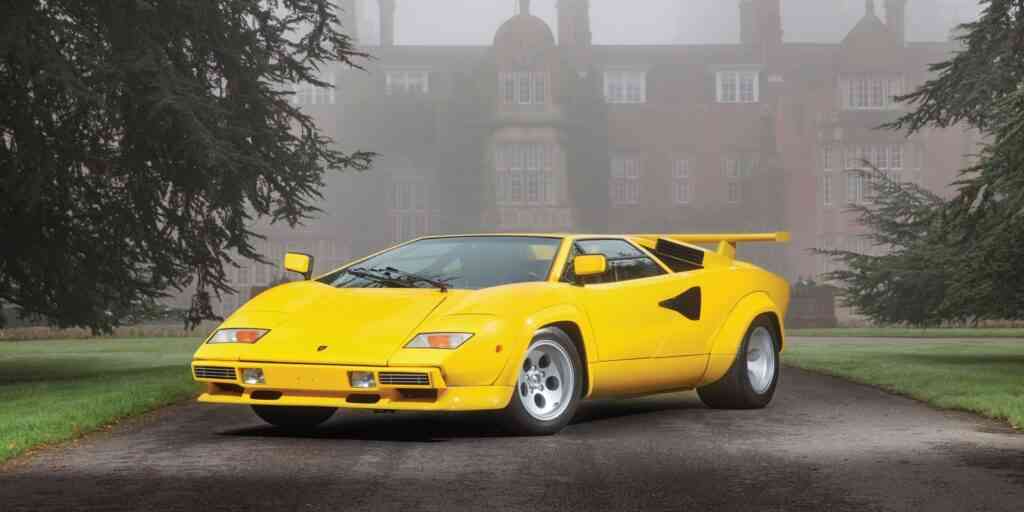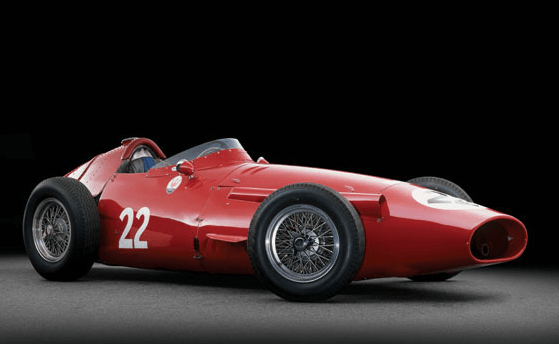If I had a billion pounds to spend on cars, what would I buy?
I often think of this question. If i had a billion pounds to spend on cars, what would I buy? The essence of the question is – if money was not an object, what car would I have in my garage. Here are the cars i would buy with my billion pounds. What’d you buy with unlimited budget?
Aston Martin DB4 Zagato

The Aston Martin DB4 GT Zagato is a grand tourer sports car designed by Zagato and produced between 1960 and 1963. Introduced in October 1960 at the London Motor Show, it was effectively a DB4 GT, lightened and improved by the Zagato factory in Italy, by Ercole Spada.
Aston Martin DB5

The Aston Martin DB5 is a British luxury grand tourer (GT) that was made by Aston Martin and designed by the Italian coachbuilder Carrozzeria Touring Superleggera. Released in 1963, it was an evolution of the final series of DB4. Although not the first in the DB series, the DB5 is the best-known cinematic James Bond car, first appearing in the James Bond film Goldfinger (1964).
Bugatti Veyron SS

The Bugatti Veyron EB 16.4 is a mid-engine sports car, designed and developed in Germany by the Volkswagen Group and manufactured in Molsheim, France, by French automobile manufacturer Bugatti. It was named after the racing driver Pierre Veyron. The Super Sport version of the Veyron is recognised by Guinness World Records as the fastest street-legal production car in the world, with a top speed of 431.072 km/h (267.856 mph).
Bugatti EB110

The Bugatti EB 110 is a mid-engine sports car produced by Bugatti Automobili S.p.A. from 1991 to 1995, when the company was liquidated. It was the only production model made by Romano Artioli’s Italian incarnation of Bugatti.
The EB110 SS (Super Sport) was a powerful return to form for the historical brand. Its combination of Italian design and French history was a winning duo. Even Michael Schumacher bought one!
What really makes the EB110 SS special, though, is the role it played in reviving Bugatti. Without this car and Romano Artioli intervention, its highly unlikely that we would ever see Bugatti in the same position it’s in today.
1954 Bentley R Type Continental Fastback

The R-Type Continental was a high-performance version of the R-Type. It was the fastest four-seat car in production at the time.
The prototype was developed by a team of designers and engineers from Rolls-Royce Ltd. and coachbuilder H. J. Mulliner & Co. led by Rolls-Royce’s Chief Project Engineer, Ivan Evernden. Rolls-Royce worked with H. J. Mulliner instead of their own coachbuilding subsidiary Park Ward because the former had developed a lightweight body construction system using metal throughout instead of the traditional ash-framed bodies.
1967 Ferrari 275 GTB

Some would argue that the 275 GTB boasts the best design ever penned for a production Ferrari berlinetta. The car is perfectly proportioned, with a long hood line and a short yet spacious boot, just one look at it is enough to make enthusiasts go weak at the knees. But, if the 275 GTB was the best-looking berlinetta, then the 275 GTB/4 was definitely the best iteration to drive and enjoy.
1968 Bizzarini 5300 GT Strada

One of the most renowned automotive engineers of all time, Giotto Bizzarrini, made his mark on the automotive industry whilst employed by a handful of the industry’s most renowned companies. But perhaps his most interesting creations were the ones that bore his own name.
1956 BMW 507

The BMW 507 is a roadster that was produced by BMW from 1956 to 1959. Initially intended to be exported to the United States at a rate of thousands per year, it ended up being too expensive, resulting in a total production figure of 252 cars and heavy losses for BMW.
2009 Alfa Romeo 8C competizione

The Alfa Romeo 8C Competizione is a sports car produced by Italian automotive manufacturer Alfa Romeo between 2007 and 2010. It was first presented as a concept car at the 2003 Frankfurt Motor Show and later offered for sale for the 2007 model year. The name refers to the eight-cylinder (cilindro in Italian) engine (8C) and Alfa Romeo’s racing pedigree (Competizione, Italian for ‘competition’). The company received over 1,400 orders for the 8C after the official announcement that the car would enter production.
Alfa Romeo 33 Stradale

The Alfa Romeo 33 Stradale is a mid-engined sports car built by Italian car manufacturer Alfa Romeo. It is one of the world’s first supercars; it was the fastest commercially available car for the standing kilometer when introduced. 18 examples were produced between 1967 and 1969.
Ferrari 250 Testarossa

The Ferrari 250 Testa Rossa, or 250 TR, is a racing sports car built by Ferrari from 1957 to 1961. It was introduced at the end of the 1957 racing season in response to rule changes that enforced a maximum engine displacement of 3 liters for the 24 Hours of Le Mans and World Sports Car Championship races. The 250 TR was closely related to earlier Ferrari sports cars, sharing many key components with other 250 models and the 500 TR.
Ferrari F40

The Ferrari F40 (Type F120) is a mid-engine, rear-wheel drive sports car engineered by Nicola Materazzi with styling by Pininfarina. It was built from 1987 to 1992, with the LM and GTE race car versions continuing production until 1994 and 1996 respectively.
Ferrari 250GTO

The Ferrari 250 GTO is Holy Grail of the automotive world, no car in history holds as much charisma and admiration as the 250 GTO – Just look at how much they go in auction if you don’t believe us! The 250 GTO model was the pinnacle of development of the 250 GT series in competition form, whilst still remaining a road car. It made its public debut at the annual pre-season Ferrari press conference in January 1962 and was the only front engine model on display.
Ford Mustang Shelby GT500

Shelby and Ford returned for the 2007 model year with the Shelby GT500. Introduced at the 2005 New York International Auto Show, the GT500 uses a supercharged and intercooled Modular 5.4 L; 330.0 cu in (5,408 cc) V8 engine rated at 500 hp (507 PS; 373 kW) at 6,000 rpm and 480 lb⋅ft (651 N⋅m) at 4,500 rpm of torque.
Ford GT40

The Ford GT40 is an American high-performance endurance racing car. … The GT40 effort was launched by Ford Motor Company to win long-distance sports car races against Ferrari, which won every 24 Hours of Le Mans race from 1960 to 1965.
Jaguar D-Type

Being the car that followed the C-Type was always going to be a tough task, but follow it the D-Type did. It is one of the most iconic designs of all time and one of the first cars to really implement aerodynamics in order to improve performance and stability.
The infamous driver-side rear fin was not initially part of the D-Type design. However, to increase high-speed stability, the fin was added to some of the Le Mans spec cars. This increased stability supposedly allowed drivers such as Mike Hawthorn to achieve over 180mph down the Mulsanne straight.
Jaguar E-Type

This is an obvious choice for the best Jaguar of all time. No Contest. Whereas many consider the XK120 to be one of the best-looking cars of all time, the E-Type is thought to be the best-looking car ever created!
It’s incredible good looks are backed up by its performance. Initially available with a 3.8-liter six-cylinder, the E-Type’s engine would expand to 4.2-liters before getting replaced by a 5.3-liter V12 in the E-Type Series 3.
Although all E-Types are great cars, it’s the Series 1 that are the most coveted to this day.
Lamborghini Miura

The Lamborghini Miura has long been hailed as one of the prettiest cars ever built and the most iconic supercar of the 1960s.
Originally conceived by Lamborghini’s engineering team, Gian Paolo Dallara, Paolo Stanzani and Bob Wallace, who designed the car in their spare time – against the wishes of company founder Ferruccio Lamborghini. The engineers envisioned a road car with racing pedigree, one which could win on the track and be driven on the road by enthusiasts, thus creating the world’s first supercar!
Lamborghini Diablo

The Diablo was the first Lamborghini ever to achieve a top speed north of 200mph. It was replaced by the Murciélago when it went out of production in 2001 and is notable even at first glance for its delightful ’90s styling.
Stylistically, the Diablo was not only the birth of modern supercar design; it was also capable of reaching over 200mph thanks to the impressive 5.7L V12 engine. A car of beauty, it sold over 2,500 models.
Lamborghini Countach

The Lamborghini Countach was a supercar icon from the moment the first prototype appeared at the Geneva Motor Show in 1971. The revolutionary shape of the Countach pioneered the wedge-shaped front-end, and the overall highly angled lines, popular with many supercars at the time, and it is considered one of the greatest supercars ever built. The Countach had groundbreaking design that is still seen in the top supercars of today.
Lamborghini Murcielago

Succeeding the Diablo and preceding the Aventador, the Murciélago spent nearly a decade as the flagship Lamborghini model. The car is named after a fighting bull that survived being hit with a sword 24 times in an 1879 fight. The Murciélago had various incarnations during its run, the latest and most powerful of which was the LP 670-4 SuperVeloce, known to you and I as the SV, a moniker that had already been initiated into the Lamborghini world with the Diablo and the Miura. Its 6.5-litre V12 engine generated 661 brake horsepower and it could do 0-60mph in 2.8 seconds, which is probably fast enough to make your face look as though you have played rugby for ten hours a day your whole life.
1956 Maserati 250F

The Maserati 250F was made by Maserati of Italy used in ‘2.5 litre’ Formula One racing between January 1954 and November 1960. Only twenty-six examples were ever made. The 250F is recognised as racing legend Sir Stirling Moss’ favourite racing car. Recommendations don’t come much grander than that, and it goes some way to explaining why the Maserati 250F is often cited as the archetypal front-engined Formula One car.
McLaren F1
The fastest naturally aspirated road car ever built, it is surely no coincidence that the 200mp+ F1 was first imagined during McLaren’s all-conquering 1988 Formula 1 season. The MP4/4 racing car, built on a revolutionary carbon fibre chasis, won 15 out of the 16 races entered, completely dominated F1 and set new standards of performance. Years later, when the McLaren F1 Road Car appeared, designed and built without compromise, it did the same on both road and tack.
Mercedes Benz 300SL Gullwing

The Mercedes-Benz 300 SL is a two-seat sports car that was produced by Mercedes-Benz as a gullwinged coupe (1954-1957) and roadster (1957-1963). The 300 SL was inspired by Max Hoffman, Mercedes-Benz’s authorized United States importer at the time, who correctly perceived a large American market for such a car. The company introduced the 300 SL in February 1954 at the International Motor Sports Show in New York instead of in Europe in order to get it into U.S. buyers’ hands sooner.
Mercedes-Benz CLK GTR Coupe

This one is very ‘Back to the Future’ or futuristic. The CLK GTR was born out of Mercedes-Benz desire to duke it out against Ferrari and Porsche in the FIA Championship. Essentially taking elements of a CLK racer and some road car trimmings and mashing them together, they produced the prototype in time for the 1997 season.
Although the 1999 GT1 class was cancelled, Mercedes-Benz had already promised 25 road-going homologation versions to customers and was obliged to produce these. Customer cars featured a 6.9-litre V12 which produced 604bhp, bestowing the GTR with ballistic performance – 0-60mph took 3.8 seconds, on the way to a top speed of 214mph.
Read more on
- Beautiful Cars
- Bucket list
- Classic Cars
- Cool Cars
- Desirable Cars
- Fantasy Garage
- Hypercars
- Iconic Cars
- Supercars
- The Cars




